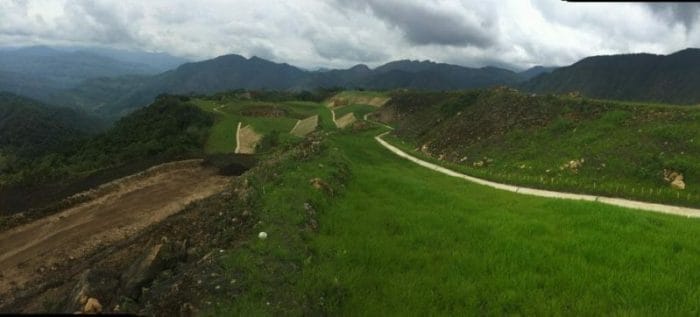Zinc One Resources (Z.V) has reported NI 43-101 compliant results from their drilling program at the company’s project in Peru.
The new core samples are from the remaining unreported holes in the Mina Grande Centro zone at the Bongara zinc mine and show high-grade zinc mineralization.
“These Mina Grande Centro results give us a better perspective of the deposit geometry and size,” said Bill Williams, interim CEO of Zinc One.
Zinc One’s highest-grade intercepts show more than 24 percent zinc over a length of 28.1 metres.
“These Mina Grande Centro results give us a better perspective of the deposit geometry and size. After drilling 64 holes for 2,237 metres in this sector, we have outlined the extent of the mineralization not mined to the north, west, and south and demonstrated that high-grade zinc mineralization is open to the northeast and east. We expect this sector to make an important contribution to the overall resource estimate.”
-Bill Williams, interim CEO of Zinc One

The company reports that the Mina Grande Centro area is one of three zones of high-grade, near-surface zinc-oxide mineralization hosted along a 1.4 kilometre trend which was tested by the 264 hole drill program.
The zinc at the Bongara mine is classified as a “Mississippi Valley-type deposit” which is found in “strongly dolomitized brecciated limestones that are stratabound.”
Zinc One has submitted an application to delineate the mineralization which was uncovered by the recent drill program and to explore the surrounding areas. This application is currently under review by Peru’s Ministry of Mines.

Sampling Protocols
Williams said drill samples are put in a 60-centimetre plastic core box for testing: “Core recovery, rock quality designation, and geologic features are logged and sample intervals, which are generally less than 2 metres, are chosen.”

These samples are then tested and photographed, with half being stored securely at the mine and the rest sent to a lab in Lima to be assayed.
Zinc One’s sampling and analysis protocols:
- Each core box is photographed and then sampled with a spatula, if soil or heavily-weathered rock, or cut with a core saw, 50% of which is placed in a sample bag and stored on site in a secure location.
- The Company independently inserts certified control standards, blanks, and duplicates, all of which comprise at least 20% of the sample batch, to monitor sample preparation and analytical quality.
- The samples are stored in a secure area until such time they are shipped to the CERTIMIN laboratory in Lima (ISO 9001 Certified) for preparation and assay.
- At the laboratory, samples are dried, crushed, pulverized and then a four-acid digestion is applied. This is followed by the ICP-AES analytical technique for 33 elements, including lead.
- The same method is used to assay zinc for values up to 20%. If zinc values exceed 20%, it is then analyzed using a titration method. The laboratory also inserts blanks and standards as well as including duplicate analyses.
In addition to the Bongara Zinc Mine Project, Zinc One also runs the Charlotte-Bongara Zinc projects in north-central Peru.
Zinc One also has an application in with the Peruvian Ministry of Mines to explore other areas in the region.
Full disclosure: Zinc One is an Equity Guru marketing client.

